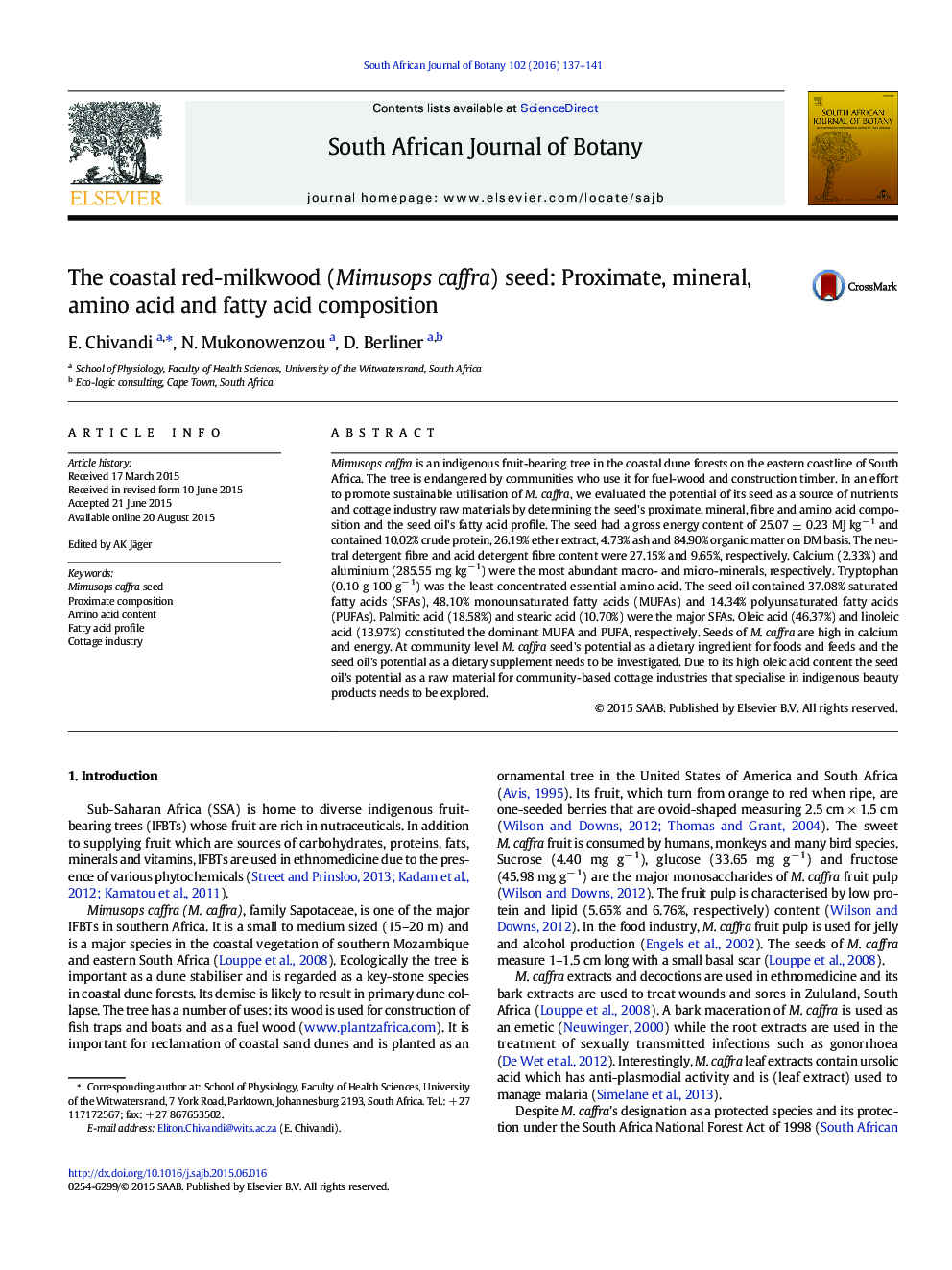| کد مقاله | کد نشریه | سال انتشار | مقاله انگلیسی | نسخه تمام متن |
|---|---|---|---|---|
| 4520157 | 1625156 | 2016 | 5 صفحه PDF | دانلود رایگان |
• M. caffra seed has low protein content.
• M. caffra seed has high energy content.
• Oil makes up 25% of M. caffra seed.
• Oleic acid constitutes 46% of M. caffra seed oil.
• M. caffra seed oil is a potential raw material for cottage industries.
Mimusops caffra is an indigenous fruit-bearing tree in the coastal dune forests on the eastern coastline of South Africa. The tree is endangered by communities who use it for fuel-wood and construction timber. In an effort to promote sustainable utilisation of M. caffra, we evaluated the potential of its seed as a source of nutrients and cottage industry raw materials by determining the seed's proximate, mineral, fibre and amino acid composition and the seed oil's fatty acid profile. The seed had a gross energy content of 25.07 ± 0.23 MJ kg− 1 and contained 10.02% crude protein, 26.19% ether extract, 4.73% ash and 84.90% organic matter on DM basis. The neutral detergent fibre and acid detergent fibre content were 27.15% and 9.65%, respectively. Calcium (2.33%) and aluminium (285.55 mg kg− 1) were the most abundant macro- and micro-minerals, respectively. Tryptophan (0.10 g 100 g− 1) was the least concentrated essential amino acid. The seed oil contained 37.08% saturated fatty acids (SFAs), 48.10% monounsaturated fatty acids (MUFAs) and 14.34% polyunsaturated fatty acids (PUFAs). Palmitic acid (18.58%) and stearic acid (10.70%) were the major SFAs. Oleic acid (46.37%) and linoleic acid (13.97%) constituted the dominant MUFA and PUFA, respectively. Seeds of M. caffra are high in calcium and energy. At community level M. caffra seed's potential as a dietary ingredient for foods and feeds and the seed oil's potential as a dietary supplement needs to be investigated. Due to its high oleic acid content the seed oil's potential as a raw material for community-based cottage industries that specialise in indigenous beauty products needs to be explored.
Journal: South African Journal of Botany - Volume 102, January 2016, Pages 137–141
